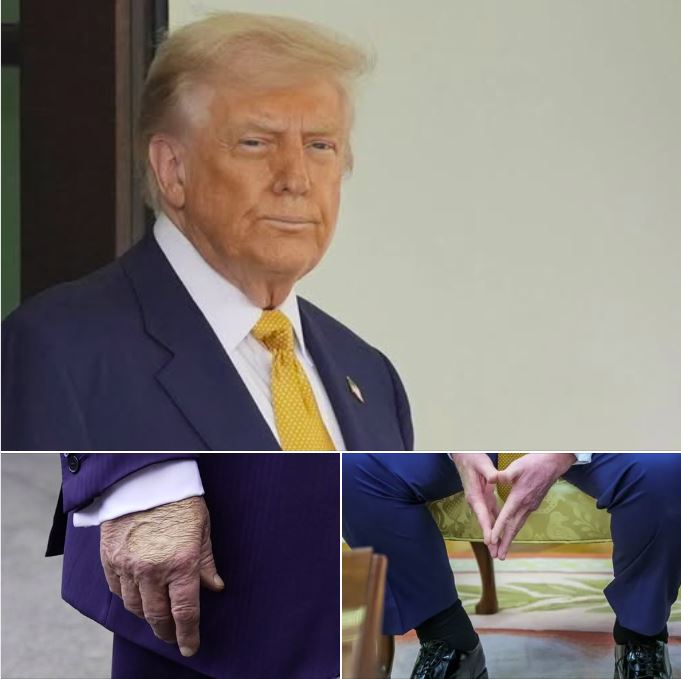Trump Diagnosed with Common Vein Condition After Noticing Leg Swelling
Washington — Former President Donald Trump has been diagnosed with chronic venous insufficiency, a relatively minor but widespread vein condition, after observing swelling in his legs, the White House confirmed on Thursday.
In a statement read during a press briefing, White House Press Secretary Karoline Leavitt shared that the president’s physician, Dr. Sean Barbabella, conducted a full medical evaluation in response to Trump’s concerns. The examination ruled out more serious vascular issues, such as deep vein thrombosis or arterial disease. The official memo was also released publicly.
Chronic venous insufficiency, or CVI, is a condition where veins in the legs struggle to efficiently return blood to the heart, according to health experts at Johns Hopkins and the Cleveland Clinic. Dr. Barbabella assured that the 79-year-old president remains in “excellent” health overall.

Speculation had grown earlier in the week after photos from the Club World Cup final in New Jersey showed Trump with visibly swollen ankles. This prompted further medical review.
The memo stated that Trump was given a thorough assessment, including vascular imaging. “Venous Doppler ultrasounds of both legs confirmed the presence of chronic venous insufficiency, a benign and frequently seen condition, particularly in individuals over the age of 70,” Barbabella wrote. He emphasized there were no indications of blood clots or arterial complications.
Additional lab work, including a full blood count, metabolic tests, and a coagulation panel, all returned results within standard ranges. An echocardiogram showed normal heart structure and function, with no signs of cardiac dysfunction, kidney issues, or systemic illness.
The president’s physician also addressed recent public images showing slight bruising on the back of Trump’s hand. According to the memo, the marks were consistent with minor tissue irritation from regular handshakes and daily aspirin use, which is part of his preventative cardiovascular care.
What Is Chronic Venous Insufficiency (CVI)?
CVI is a form of vein disease where damaged veins in the legs prevent blood from flowing effectively back to the heart. While it isn’t typically life-threatening, it can cause discomfort and mobility challenges.
According to Johns Hopkins Medicine, chronic venous insufficiency affects approximately 1 in 20 adults and is more prevalent in people over 50. Risk increases with age and may be influenced by factors such as obesity, prior leg injuries, genetic predisposition, a sedentary lifestyle, smoking, or extended periods of standing or sitting.
Symptoms of CVI can include swelling in the lower legs or ankles, aching or tired legs, skin changes like discoloration or itchiness, and sensations of cramping or tingling.
Treatment focuses on enhancing circulation through lifestyle changes like exercise, weight management, and leg elevation. Compression garments may help, and in some cases, medications or minimally invasive procedures are considered. For more severe cases, surgery can be an option.



